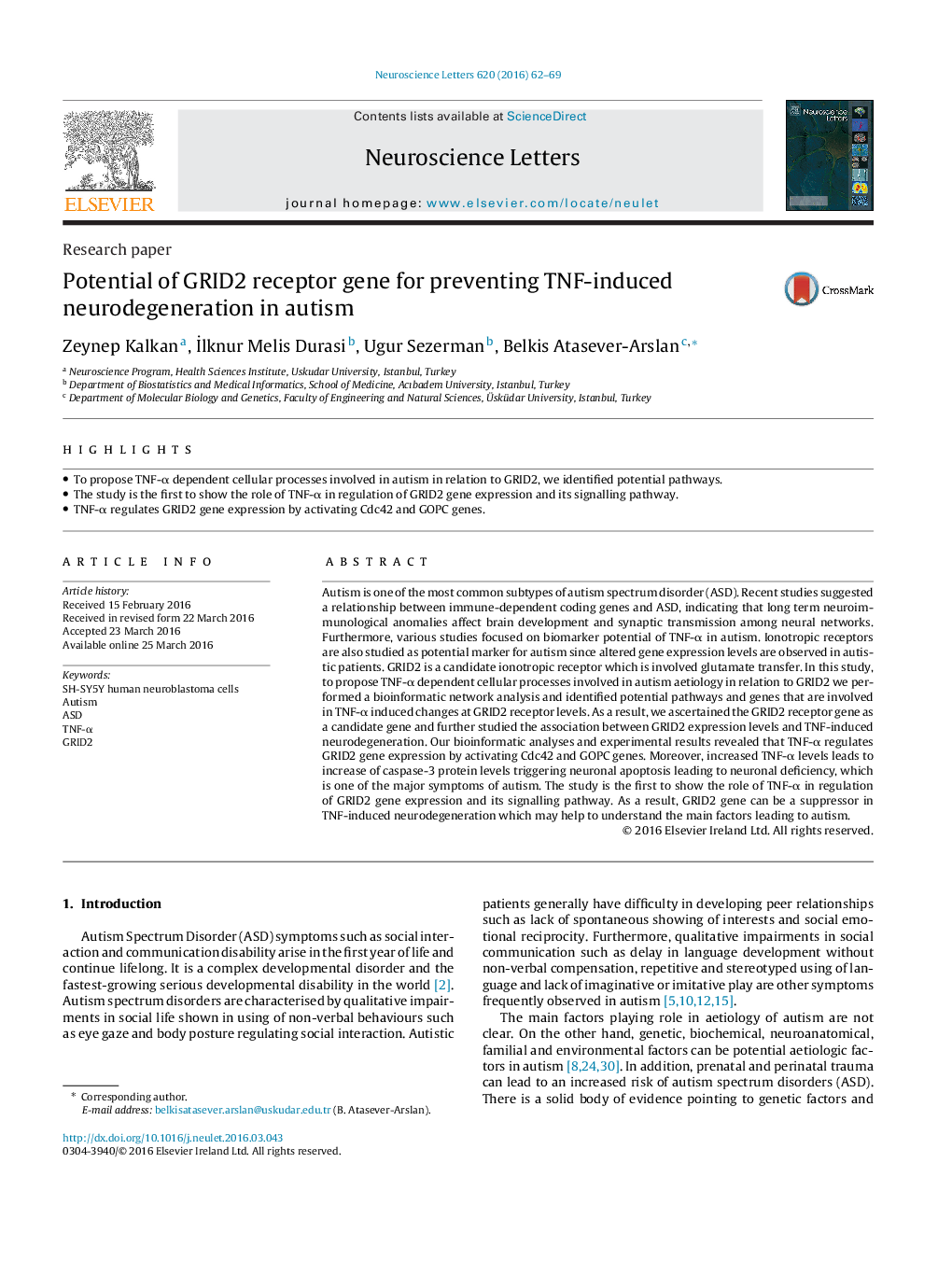| Article ID | Journal | Published Year | Pages | File Type |
|---|---|---|---|---|
| 6279577 | Neuroscience Letters | 2016 | 8 Pages |
Abstract
Autism is one of the most common subtypes of autism spectrum disorder (ASD). Recent studies suggested a relationship between immune-dependent coding genes and ASD, indicating that long term neuroimmunological anomalies affect brain development and synaptic transmission among neural networks. Furthermore, various studies focused on biomarker potential of TNF-α in autism. Ionotropic receptors are also studied as potential marker for autism since altered gene expression levels are observed in autistic patients. GRID2 is a candidate ionotropic receptor which is involved glutamate transfer. In this study, to propose TNF-α dependent cellular processes involved in autism aetiology in relation to GRID2 we performed a bioinformatic network analysis and identified potential pathways and genes that are involved in TNF-α induced changes at GRID2 receptor levels. As a result, we ascertained the GRID2 receptor gene as a candidate gene and further studied the association between GRID2 expression levels and TNF-induced neurodegeneration. Our bioinformatic analyses and experimental results revealed that TNF-α regulates GRID2 gene expression by activating Cdc42 and GOPC genes. Moreover, increased TNF-α levels leads to increase of caspase-3 protein levels triggering neuronal apoptosis leading to neuronal deficiency, which is one of the major symptoms of autism. The study is the first to show the role of TNF-α in regulation of GRID2 gene expression and its signalling pathway. As a result, GRID2 gene can be a suppressor in TNF-induced neurodegeneration which may help to understand the main factors leading to autism.
Related Topics
Life Sciences
Neuroscience
Neuroscience (General)
Authors
Zeynep Kalkan, Ä°lknur Melis Durasi, Ugur Sezerman, Belkis Atasever-Arslan,
